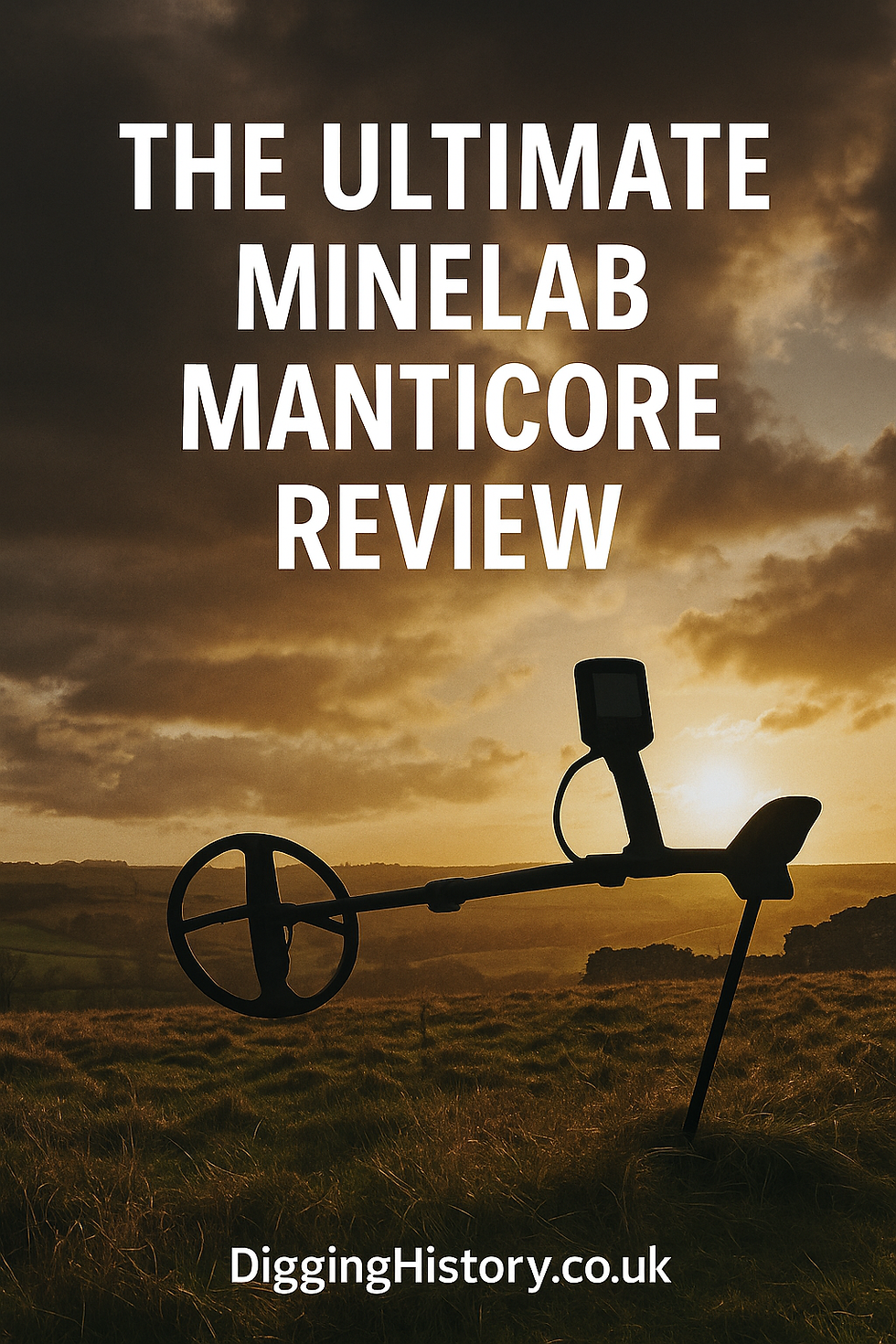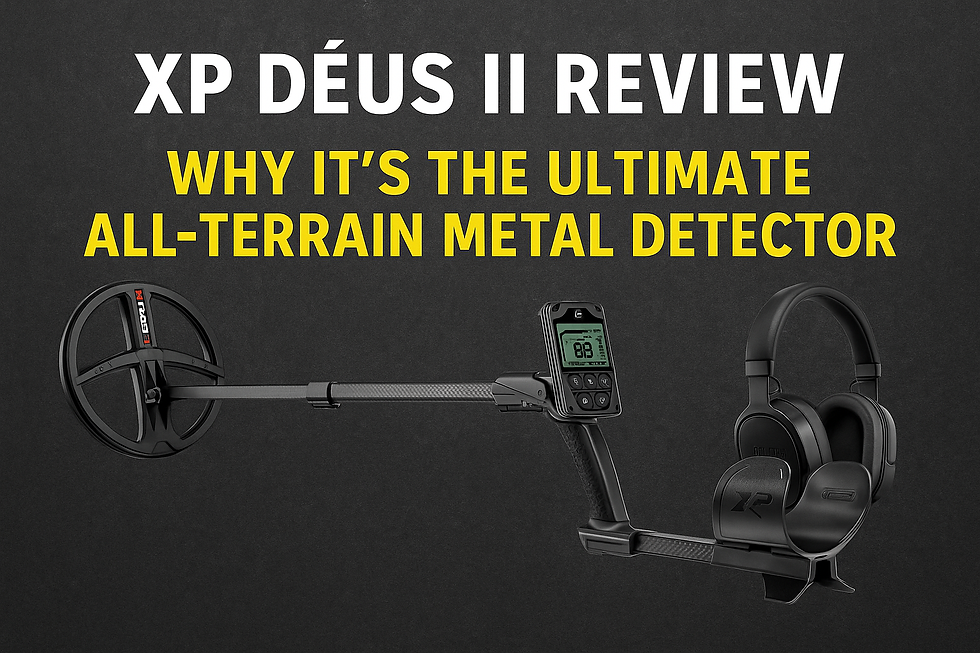Detectorists in Court: The Legal Cases That Shaped Metal Detecting Law in the UK
- DiggingHistory.co.uk
- Sep 29
- 5 min read
When the Detectorist Meets the Judge
Imagine you’ve just unearthed a glittering coin hoard in a quiet Herefordshire field. The detector beeps, your spade slices through soft soil, and out tumbles history itself. For most of us, this is the dream moment. But for some detectorists, that dream has ended not in celebration but in a courtroom, facing charges of theft, concealment, or damaging protected heritage.
Over the past three decades, a string of prosecutions has shaped the way we practise metal detecting in the UK. These legal cases have clarified the responsibilities of detectorists, defined the penalties for misconduct, and in some tragic instances, destroyed lives and reputations.
This article takes a deep dive into the courtroom dramas that have left their mark on our hobby. From the Viking coins of the Herefordshire Hoard to the first Treasure Act prosecution, we’ll explore how these cases unfolded, what they mean for detectorists today, and how to stay firmly on the right side of the law.

The Legal Framework: Understanding Metal Detecting Law in the UK
Before diving into famous prosecutions, it’s vital to understand the metal detecting law UK hobbyists must follow. From the Treasure Act 1996 to strict protections for scheduled monuments, these rules shape everything detectorists do in the field. Ignoring them has landed some hobbyists in serious trouble and, as the following court cases show, the consequences can be severe.
The Treasure Act 1996
Introduced in England, Wales, and Northern Ireland, the Treasure Act 1996 defines what counts as “treasure” and sets out a clear reporting system. (gov.uk)
Treasure is broadly:
All coins at least 300 years old found together (two or more).
Objects over 300 years old with at least 10% precious metal content (gold or silver).
Prehistoric hoards of any metallic composition.
Any object designated as treasure by the Secretary of State because of its historical significance.
If you find treasure, you must report it to the local coroner within 14 days. The coroner holds an inquest to decide if it qualifies as treasure. Museums can acquire it, with fair rewards shared between finder and landowner.
Failure to report is a criminal offence punishable by fine, imprisonment, or both.
The Portable Antiquities Scheme (PAS)
Running alongside the Treasure Act is the Portable Antiquities Scheme, managed by the British Museum. Detectorists are encouraged (though not legally obliged, unless it’s treasure) to report all finds to local Finds Liaison Officers. This voluntary system has built a national database of over a million artefacts, vital for archaeological research.
Scheduled Monuments and Heritage Laws
The Ancient Monuments and Archaeological Areas Act 1979 makes it an offence to use a metal detector on a scheduled monument without a licence. Disturbing archaeological remains in protected areas can lead to prosecution, confiscation of equipment, and bans.
Trespass and Theft

Metal detecting without the landowner’s permission may amount to trespass. If you remove objects without consent, you risk charges under the Theft Act 1968.
Scotland and Northern Ireland
In Scotland, all finds legally belong to the Crown under Treasure Trove law. Detectorists must report everything (not just precious metal). Northern Ireland has strict licensing requirements for detecting.
Landmark Legal Cases: Detectorists in the Dock
The Herefordshire Hoard (2015 – Trial in 2019)
The Herefordshire Hoard is the most infamous detectorist court case in UK history.
The Discovery
In June 2015, detectorists George Powell and Layton Davies found a spectacular Viking hoard in a field near Leominster, Herefordshire. It contained:
Gold and silver coins from the time of Alfred the Great.
A crystal pendant mounted in gold.
A gold ring and arm-band.
The find was potentially worth millions and of immense historical value.
The Crime
Instead of reporting it, Powell and Davies concealed much of the hoard, selling coins and artefacts to dealers. Only a fraction was ever recovered.
The Trial
In November 2019, both men were convicted of theft and concealing treasure.
Powell received 10 years’ imprisonment.
Davies received 8.5 years.
Coin dealers Simon Wicks and Paul Wells were also convicted of related offences.
In 2023, Proceeds of Crime proceedings ordered Powell and Davies to repay £600,000 each or serve an additional five years in prison.
The Lesson
This case sent shockwaves through the detecting community. It proved that courts treat concealment harshly and that the Treasure Act has real teeth.
The Hoxne Hoard (1992 – Pre-Treasure Act)
Although not a criminal case, the Hoxne Hoard is vital background.
Discovered in Suffolk by Eric Lawes in 1992.
Contained over 14,000 late Roman coins and 200 silver objects.
Reported promptly and legally.
The find spurred the introduction of the Treasure Act 1996, replacing the vague “treasure trove” system.
Kate Harding and the Ludlow Piedfort (2009)
The first person prosecuted under the Treasure Act was Kate Harding, a detectorist from Shropshire.
She found a medieval French silver “piedfort” (a thick ceremonial coin).
Instead of reporting it within 14 days, she kept it for years.
Museums tried to contact her; she gave conflicting accounts, even claiming she’d lost it.
In 2009, she was convicted under the Treasure Act. The case made clear that ignorance or carelessness is no defence.
Scottish Heritage Case (2022)
In June 2022, Andrejs Grisulis and Matthew Madden were caught illegally detecting on a scheduled monument in Scotland.
They damaged the site and removed artefacts.
Prosecuted under heritage law, they were sentenced to 80 hours of unpaid work each, banned from Historic Environment Scotland sites for two years, and lost their detector.
This case shows how seriously Scotland takes protection of ancient monuments.
The Cleethorpes Beach Ban Challenge (2023)
In 2023, detectorists clashed with North East Lincolnshire Council over a ban on detecting on Cleethorpes beach.
Detectorists threatened legal action, arguing the council had acted unlawfully.
The case has not yet been resolved in court but highlights how bylaws can trigger legal disputes.
Other Notable Cases
Roger Bland’s reports (PAS) highlight smaller prosecutions for failing to report finds.
Several nighthawkers (illegal night-time detectorists) have been fined or jailed for trespassing and damaging archaeological sites.
Patterns in Court Outcomes
Concealment = Harsh Sentences. Judges see it as theft from both landowners and the nation.
Failure to Report = Criminal Record. Even a single coin can bring conviction.
Monument Damage = Confiscation and Bans. Courts will take your detector and ban you from sites.
Proceeds of Crime = Financial Ruin. Courts can seize profits years later.
How These Cases Changed Metal Detecting
Greater Awareness: Detectorists now know the risks of concealment.
Clubs & Insurance: More hobbyists join clubs and follow codes of conduct.
Portable Antiquities Scheme: Reporting finds is seen as both sensible and honourable.
Public Image: High-profile prosecutions damaged the hobby’s reputation, making responsible detecting even more important.
Grey Areas and Ongoing Legal Issues
New Treasure Definitions: From July 2023, “significance” can make non-precious finds treasure.
Local Bylaws: Councils can ban detecting on public land (parks, beaches).
Nighthawking: Still a major problem, damaging the hobby’s reputation.
Staying on the Right Side of the Law
Tips for every detectorist:
Always get landowner permission in writing.
Know where scheduled monuments are — maps are online.
Report all treasure within 14 days.
Use the Portable Antiquities Scheme to log non-treasure finds.
Join a club for support and insurance.
Keep accurate records of locations and contexts.
Lessons from the Dock
Court cases involving detectorists are sobering reminders: the law takes heritage seriously. From the Viking riches of Herefordshire to the humble piedfort of Ludlow, the message is clear: concealment, theft, and damaging monuments will be punished.
Yet these cases also show the right way forward. Report your finds. Work with landowners. Respect the past. If you do, your biggest day in metal detecting will be celebrated in museums, not condemned in court.
Because at the end of the day, metal detecting is about uncovering history, not covering your tracks.
✅ Thank you for reading! If you enjoyed this deep dive into detectorists in court and how UK law has shaped the hobby, please share it with your detecting friends, club members, and history buffs. The more we spread awareness, the stronger and more responsible our metal detecting community becomes.
👉 Share now and keep the conversation going!





Comments